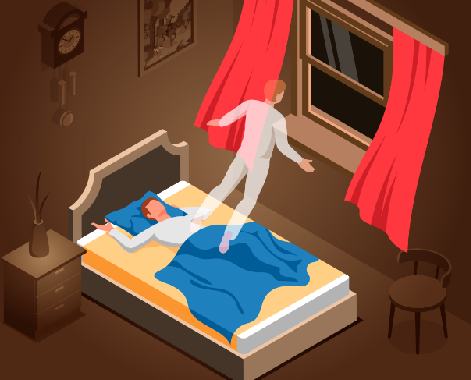Nephomania, a term not commonly heard, refers to an intense desire for renewal and growth, particularly among females. In this guide, we delve into the complexities of Nephomania in females, exploring its impact on mental health, coping strategies, empowerment, and navigating relationships.
Nephomania, often referred to as nymphomania, is a term that historically carried negative connotations, portraying women as excessively sexually active. However, in contemporary discourse, we aim to redefine and understand nephomania as a manifestation of liberated sexual expression and agency.
Symptoms of Nephomania in Females
Nephomania, also known as hypersexuality or excessive sexual desire, can manifest in various symptoms in females. Here are some common symptoms associated with nephomania in females:
Intense Sexual Urges
Females with nephomania may experience intense and persistent urges for sexual activity, often beyond what is considered typical or healthy.
Frequent Sexual Fantasies
They may have recurrent and vivid sexual fantasies that consume a significant amount of their thoughts and attention.
Compulsive Sexual Behavior
Nephomaniac females may engage in compulsive sexual behaviors, such as frequent masturbation, multiple sexual partners, or excessive pornography consumption.
Risk-Taking Behaviors
They may exhibit risk-taking behaviors related to sex, such as unprotected intercourse with unfamiliar partners or engaging in sexually adventurous activities without considering consequences.
Distress or Impairment
These symptoms of nephomania can cause distress, impair functioning in daily life, and lead to difficulties in relationships, work, or social interactions.
Causes of Nephomania
A woman being labeled as a “nymph” or experiencing what might be described as nymphomania is often more about societal perceptions and stereotypes than an actual medical condition. The term “nymphomania” historically has been used to pathologize women’s sexual desire, portraying it as excessive or abnormal. However, in modern understanding, there’s a recognition that women, like men, have varying levels of sexual desire that are entirely normal and healthy.
Factors that can contribute to a woman being labeled as a nymph or experiencing heightened sexual desire might include:
Individual Variation
Just as people have different personalities, they also have different levels of sexual desire. Some individuals naturally have a higher libido, which may lead others to perceive them as more sexually active or “nymph-like.”
Cultural and Societal Influences
Societal attitudes toward women’s sexuality play a significant role in how women are perceived. In cultures where female sexual expression is stigmatized or misunderstood, women who express their desires openly may be unfairly labeled as nymphs.
Psychological Factors
Like any aspect of human behavior, sexual desire can be influenced by psychological factors such as stress, mood, past experiences, and relationship dynamics. These factors can contribute to fluctuations in sexual desire, leading to misunderstandings or misinterpretations.
Medical Conditions
In some cases, certain medical conditions or hormonal imbalances can affect libido. However, it’s important to note that experiencing a high level of sexual desire does not necessarily indicate a medical issue.
Social Labeling
Unfortunately, societal labels and stereotypes can sometimes be applied to women based on limited understanding or biases. Terms like “nymph” or “nymphomaniac” are often used in a derogatory manner, further contributing to misconceptions about women’s sexuality.
Types of Nymphomania
Nymphomania, also known as hypersexuality or compulsive sexual behavior, is a complex phenomenon that can manifest in different ways. While it’s crucial to recognize that labeling individuals with specific types of nymphomania can be stigmatizing and oversimplifying, it’s also helpful to understand the diverse presentations of this condition for educational purposes. Here are some general types or patterns of nymphomania that may be observed:
Chronic Nymphomania:
This type involves persistent and intense sexual desire or behavior over an extended period. Individuals with chronic nymphomania may experience ongoing challenges in managing their sexual impulses, leading to difficulties in daily functioning and relationships.
Situational Nymphomania:
Situational nymphomania refers to a temporary increase in sexual desire or activity in response to specific triggers or situations. For example, a person may experience heightened sexual urges during periods of stress, emotional distress, or after consuming substances that lower inhibitions.
Compulsive Nymphomania:
Compulsive nymphomania is characterized by a repetitive and uncontrollable urge to engage in sexual activities, often despite negative consequences. Individuals with this type of nymphomania may feel compelled to seek out sexual encounters compulsively, leading to disruptions in their personal and professional lives.
Secondary Nymphomania:
Secondary nymphomania can occur as a result of underlying medical conditions, such as neurological disorders, hormonal imbalances, or side effects of medications. In these cases, the increased sexual desire or behavior is a symptom of the primary condition rather than a standalone disorder.
Covert Nymphomania:
Covert nymphomania refers to a type of hypersexuality that may not be immediately apparent to others. Individuals with covert nymphomania may hide their sexual activities or desires, leading to internal struggles and feelings of shame or guilt.
Compensatory Nymphomania:
This type of nymphomania involves using sexual behavior as a coping mechanism for dealing with emotional pain, trauma, or low self-esteem. The excessive focus on sexual activities serves as a way to distract from underlying psychological issues.
Impact of Nephomania on Mental Health

Emotional Challenges
While Nephomania can drive progress, it may also lead to:
- Anxiety due to high expectations.
- Self-doubt when facing setbacks.
- Burnout from continuous striving.
Social Stigma and Isolation
Misunderstanding Nephomania can lead to:
- Social isolation due to perceived intensity.
- Stigma around ambitious goals and aspirations.
Management of Nymphomania
The management of nymphomania, also known as hypersexuality or compulsive sexual behavior, typically involves a comprehensive approach that addresses the underlying factors contributing to the condition. It’s important to note that managing nymphomania often requires professional guidance from mental health experts, such as psychologists, psychiatrists, or sex therapists. Here are some key components of managing nymphomania:
Assessment and Diagnosis:
The first step in managing nymphomania is a thorough assessment and diagnosis by a qualified mental health professional. This process involves gathering information about the individual’s sexual behaviors, emotional well-being, medical history, and any underlying factors contributing to hypersexuality.
Psychotherapy:
Psychotherapy, particularly cognitive-behavioral therapy (CBT) and dialectical behavior therapy (DBT), is a cornerstone of nymphomania management. These therapeutic approaches help individuals explore and understand their thoughts, emotions, and behaviors related to hypersexuality. Therapy sessions focus on developing coping strategies, improving impulse control, and addressing underlying psychological issues.
Medication:
In some cases, medication may be prescribed to help manage symptoms of nymphomania. This may include antidepressants, mood stabilizers, or medications that target impulse control and compulsive behaviors. Medication is typically used in conjunction with psychotherapy for comprehensive treatment.
Support Groups:
Engaging in support groups or group therapy sessions can provide valuable peer support, encouragement, and insights into managing hypersexuality. Support groups tailored to sexual health and addiction can offer a sense of community and understanding for individuals navigating nymphomania.
Lifestyle Changes:
Adopting healthy lifestyle habits, such as regular exercise, adequate sleep, stress management techniques, and balanced nutrition, can contribute to overall well-being and help regulate sexual impulses.
Relationship Counseling:
For individuals in relationships, couples counseling or relationship therapy may be beneficial. These sessions focus on improving communication, addressing relationship dynamics, and fostering intimacy in healthy ways.
Education and Awareness:
Education about hypersexuality, its causes, and management strategies is crucial for individuals and their support networks. Understanding that nymphomania is a treatable condition and seeking help without judgment or stigma is essential for effective management.
Social effect of Nymphomania
The social effects of nymphomania, also known as hypersexuality or compulsive sexual behavior, can be significant and may impact various aspects of an individual’s life as well as their interactions with others. Here are some of the social effects associated with nymphomania:
- Relationship Strain: Hypersexuality can strain relationships, particularly romantic partnerships. Excessive focus on sexual activities may lead to conflicts, misunderstandings, and feelings of neglect or inadequacy in partners.
- Health Risks: Engaging in risky sexual behaviors, such as unprotected sex or multiple sexual partners, can increase the risk of sexually transmitted infections (STIs) and other health complications, impacting not only the individual but also their social and sexual networks.
Here are the FAQs about Nephomania
Nephomania, or hypersexuality, is a term used to describe excessive or compulsive sexual desire or behavior. It is characterized by intense and often uncontrollable urges related to sexual activity. On the other hand, general ambition refers to a strong desire to achieve success, goals, or accomplishments in various aspects of life, such as career, education, or personal development. While both involve strong desires, they are distinct in their focus and manifestations.
In mythology, nymphs are typically depicted as immortal or semi-divine beings associated with nature. They are not bound by biological processes like pregnancy in the same way humans are. However, in some mythological tales, there are instances where nymphs interact with gods or mortals and produce offspring, although these stories are usually symbolic or metaphorical rather than literal.
In Greek mythology, one of the most famous nymphs is Echo. Echo is known for her tragic love story with Narcissus, where her ability to only repeat the words of others led to unrequited love and her eventual transformation into a voice. Echo is often portrayed as a symbol of longing, reflection, and the power of voice.
A male nymph is often referred to as a “satyr” in Greek mythology. Satyrs are mythical creatures with human-like bodies and goat-like features, known for their playful and lustful nature.
Conclusion
Nephomania in females is a multifaceted journey of self-discovery, growth, and empowerment. By understanding its nuances, embracing coping strategies, and fostering supportive relationships, females with Nephomania can navigate challenges, celebrate strengths, and lead fulfilling lives.





